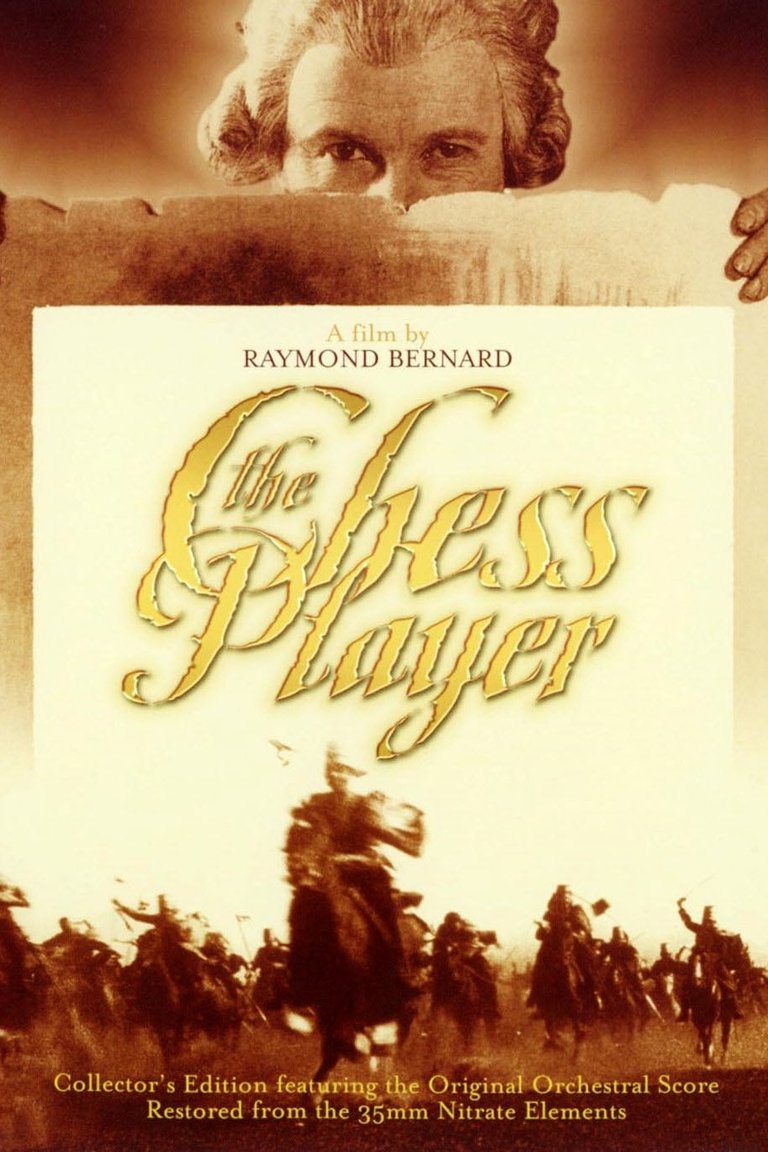Film Review: The Chess Player (Le joueur d'échecs, 1927)

The Turk, famous 18th Century human-like chess-playing machine, was either the brilliant piece of engineering centuries ahead of its time or (more likely) one of the most successful hoaxes in history. In any case, The Turk inspired many works of fiction, including The Chess Player, 1926 novel by French writer Henri Dupuy-Mazuel, which was in 1927 adapted into eponymous film directed by Raymond Bernard, which is now considered to be among the last great classics of French silent cinema.
The plot is set in 1776, few years after the First Partition of Poland, which ended with Lithuanian capital of Vilnius being annexed to Russian Empire. Tyrannical rule doesn’t sit well among local population, especially Polish nobility gathered around young hussar Boleslas Worowski (played by Pierre Blanchar) and his adopted sister Sophie Novinska (played by Edith Jehanne) who became a spiritual leader and icon for the cause of Polish independence. Boleslas is nevertheless serving as officer in Pole-Russian regiment and has befriended Prince Oblomoff (played by Pierre Batchef), Russian officer who has fallen in love with Sophie. That friendship is tested when another Russian officer attempts to have his way with Polish dancer Wanda (played by Jackie Monnier). He is stopped and ultimately killed by Boleslas, and the ensuing violence sparks uprising against Russians. The rebels, however, are outgunned and outmanned and Russians easily win the battle. Boleslas is gravely wounded and later tended by Sophie, while Russian authorities offer huge reward for his capture. Baron von Kempelen (played by Charles Dullin), friend of his family, is an inventor who has built number of lifelike automata. He offers ingenious plan to smuggle him out in Germany. Since Boleslas is known as an excellent chess player, he built another chess playing automaton called “Turk” with which he would tour the country, with Boleslas being hidden within machine. The plan almost works until Boleslas’ former rival, Major Nicolaeff (played by Camille Beart), becomes suspicious and arranges the automaton to be brought to St. Petersburg where Russian empress Catherine II (played by Marcelle Charles-Dullin) would play against him.
Made at the time when silent cinema reached its zenith, The Chess Player looks both like an old fashioned and modern film at the same time. Produced by La Société des Films Historiques, French studio originally founded with express purpose of recreating French history without distortions like those in Hollywood or German films, it showed that French film makers could produce grand historic epics, although, in this particular case, the theme wasn’t French history. Bernard nevertheless used locations in France, Switzerland and Poland, with Polish military enthusiastically providing men and horses for arguably the most spectacular cavalry charge in history of silent cinema. Apart from spectacle, Bertrand also delivered innovative techniques, including suggestive montage editing reminiscent of Battleship Potemkin made two years earlier, but also double exposure and even use of movable and hand-held camera during battle scenes. Bernard even allows music to play important part of the plot, despite film being silent, and that happens in suspenseful when Sophie plays banned patriotic anthem while Russian Cossacks are moving nearby. Bertrand, on the other hand, had actual soundtrack written by Henri Rabaud, which helps a film and allows the use of relatively few intertitles. Although at few instances it looks like it could be in the same league with Gance’s Napoleon, Bertrand’s film nevertheless has some flaws inherent for silent cinema, like overmelodramatic plot and annoyingly theatrical form of acting. Pierre Blanchar is decent, while Edith Jehanne (whose career more or less ended with the arrival of sound) impresses more with her looks. Charles Dullin is much more impressive as eccentric inventor, while his wife Marcelle Charles-Dullin is effective as the tyrannical empress. Most of today’s viewers would have problems to adapt to the film, less because of lack of colour or sound, and more because of its excessive length of nearly two and half hours, which becomes especially apparent near the end, despite one interesting horror-like scene featuring small army of automata taking out one of the villains. The Chess Player was commercially successful film, but the arrival of sound cinema soon made it obsolete, leaving only hardcore cinephiles to appreciate. In 1938 sound remake was directed by Jean Dréville.
RATING: 7/10 (+++)
Blog in Croatian https://draxblog.com
Blog in English https://draxreview.wordpress.com/
InLeo blog https://inleo.io/@drax.leo
InLeo: https://inleo.io/signup?referral=drax.leo
Unstoppable Domains: https://unstoppabledomains.com/?ref=3fc23fRc42c1b417
Hiveonboard: https://hiveonboard.com?ref=drax y
Bitcoin Lightning HIVE donations: https://v4v.app/v1/lnurlp/qrcode/drax
Rising Star game: https://www.risingstargame.com?referrer=drax
1Inch: https://1inch.exchange/#/r/0x83823d8CCB74F828148258BB4457642124b1328e
BTC donations: 1EWxiMiP6iiG9rger3NuUSd6HByaxQWafG
ETH donations: 0xB305F144323b99e6f8b1d66f5D7DE78B498C32A7
Posted using CineTV